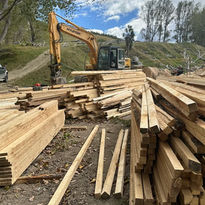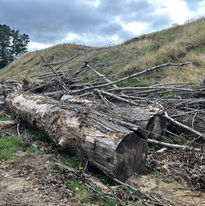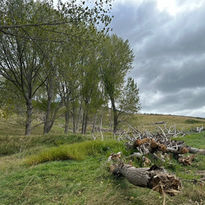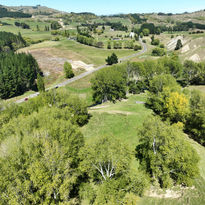HĀWEA CATCHMENT
Area 4,984ha
Land Use: 70 percent of the catchment is in pasture, 26 percent in exotic forest and less than 3 percent in native vegetation.
CATCHMENT
GROUP
Catchment Committee Chair Evan Potter
Catchment Co-ordinator Pixie Seligman
Email tukicoordinator@gmail.com
Phone 0277212423


ABOUT OUR CATCHMENT
Spanning 4,984 ha, the Hāwea catchment represents 2 percent of the wider Tukituki catchment.
The catchment is primarily composed of hill country farmland, including areas of very steep terrain. The underlying geology consists predominantly of mudstone and claystone, making the landscape highly susceptible to erosion.
Erosion and sedimentation continue to be significant challenges across the catchment. Aging poplar and willow plantings along waterways are also causing destruction during floods.
TLC DEMONSTRATION PROJECT
Project Summary
Across Hawke’s Bay there is a massive resource in terms of millable poplar. But is it worth the hassle? The Hāwea catchment used a TLC demonstration grant to investigate the economics of milling poplar.
Some landowners see poplar trees as an annoyance at best and a liability at worst. Most poplars planted in the 1960-70's were never pruned or thinned properly and as a result have grown into monsters. These monsters can be very awkward, costly and unsafe to deal with.
In the next 10-15 years these old-man poplars will have to come out. The question then becomes what to do with this material to avoid it causing destruction or just being added to burn piles.
Outcomes
As part of this project, Evan Potter milled three poplars on his farm to be used for sheep and cattle yard timber and battens. A worksheet on the findings from this project is now available. For more information, please get in touch with Pixie Seligman.


THE BIG PICTURE
The Big Picture
As part of The Big Picture project, TLC has developed independent, science-backed catchment plans for each of the 17 sub-catchments of the Tukituki River. These farmer-led plans address key environmental challenges specific to each area while identifying practical, affordable solutions. These plans do not impose rules or regulations but they give farmers and catchment groups a roadmap for future planning to improve water quality, boost farm productivity, and open the door to future funding opportunities.
TLC partnered with environmental planning consultancy Environment, Innovation and Strategy Ltd (EIS), who collected data specific to each sub-catchment, including erosion maps, flow path models, land use capability, soil types, and water monitoring information. Alongside the scientific data, in December 2024, TLC hosted workshops for farmers and growers in each sub-catchment to make sure the solutions aligned with the realities of farming and growing in each sub-catchment.
Hāwea Draft Sub-Catchment Plan: Summary
Hāwea Draft Sub-Catchment Plan: Full Report
Hāwea Catchment Maps
TLC FARMER TOOLBOX
Tools for the Hāwea Catchment
As part of The Big Picture, TLC has developed the TLC Farmer Toolbox, designed to support landowners in making informed decisions and enable them to implement changes with confidence, ensuring that time and money are invested wisely.
The TLC Toolbox includes the following:
-
TLC’s On-Farm Action Planning Tool - prioritise on-farm environmental actions based on their cost-effectiveness and impact.
-
TLC’s Plant Selection Tool - choose the right plants for on-farm environmental projects by matching your planting zone and purpose with suitable species.
-
TLC’s Surface Erosion Tool - determine the most erosion-prone areas on your farm to identify priority sites for effective soil conservation measures.
-
TLC’s Water Runoff Mapping Tool - identify sites for on-farm edge-of-field mitigations such as sediment traps, constructed wetlands and detention bunds.
-
TLC’s Riparian Mapping Tool - better understand riparian condition and vegetation class along waterways to prioritise where riparian management should occur.
-
TLC’s ETS Guide- download TLC’s ETS Guide for key information on the Emissions Trading Scheme, including its purpose, benefits, eligibility, enrolment process, and potential costs and returns.
-
TLC’s Willow Management Guide - download TLC’s Invasive Willow Management Guide for insights on willows in the Tukituki, control strategies and riparian restoration.
-
TLC’s List Of Advisors - connect with local advisors for tailored advice and potential funding opportunities.



















